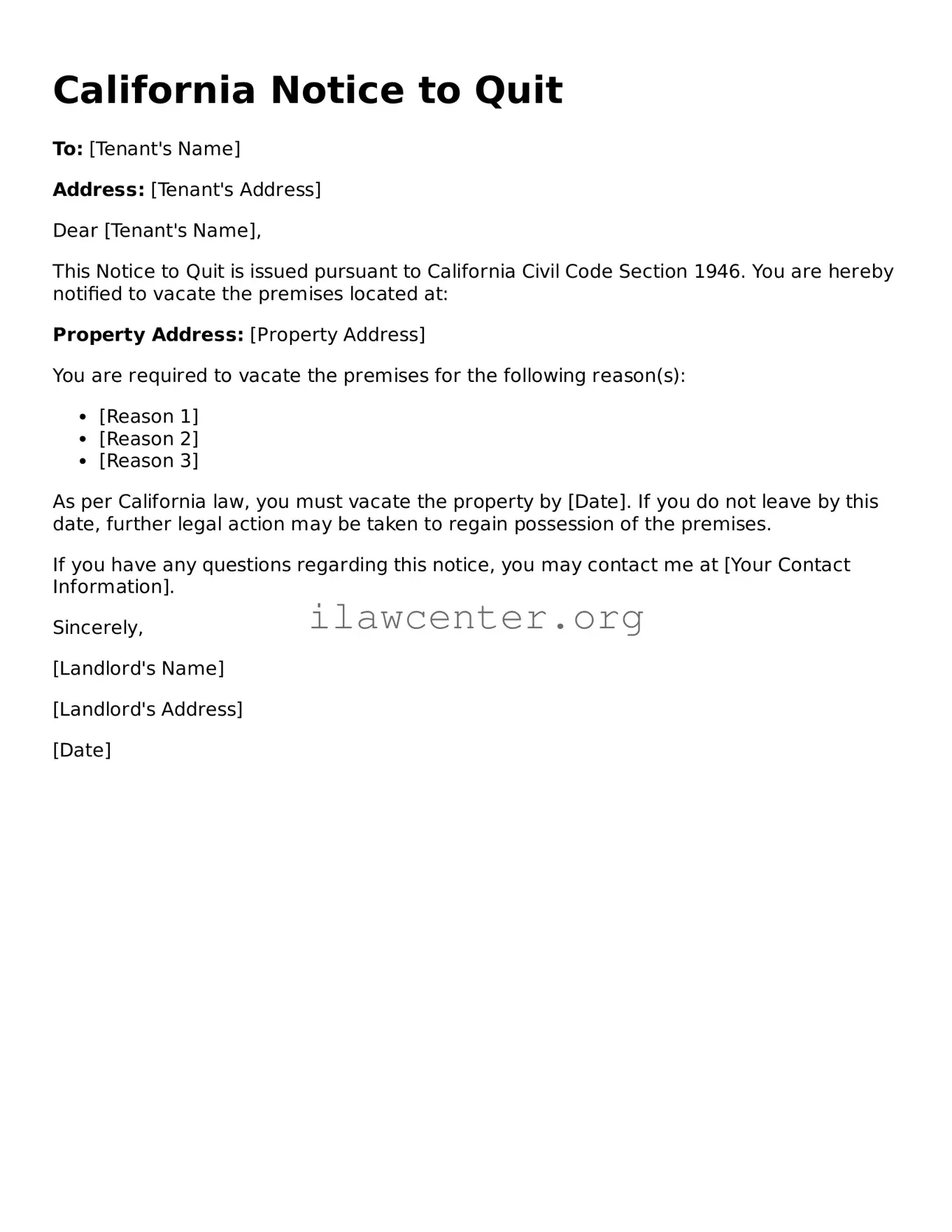Instructions on Utilizing California Notice to Quit
Once you have obtained the California Notice to Quit form, it's crucial to fill it out correctly to ensure compliance with local landlord-tenant laws. After completing the form, submit it to the tenant according to the rules governing notices in your area. This ensures that all parties are aware of the situation and can take appropriate action.
- Begin by entering the date at the top of the form. This date is important as it marks the beginning of the notice period.
- Next, provide your name and address in the designated fields. Ensure that your information is current and accurate.
- In the section for the tenant's name and address, clearly write the name of the tenant and their current residence. Verify that the information matches public records.
- Specify the reason for the notice. Be clear and concise while ensuring that your reason is valid under California law.
- Indicate the time frame for the tenant to vacate the premises. Depending on the reason for the notice, this may vary from three days to thirty days.
- Sign and date the form at the bottom. Ensure your signature is clear to avoid any confusion.
- If required, have the document notarized. Notarization can add an extra layer of legal protection.
- Make copies of the completed form for your records before serving it to the tenant.
After following these steps, serve the Notice to Quit to the tenant personally, by mail, or through another method permitted by law. Retain proof of service as it may be essential in any future legal proceedings.
